When you hear the word “jukebox,” what image pops into your head? Chances are that what you are picturing is an iconic representation of what the jukebox is and what it stands for.
There are thousands of variations of jukeboxes out there, and yet most people probably have the same basic image of a jukebox in their mind. Have you ever thought about why that is?
No?
Lucky for you, Home Leisure Direct has thought about it, and here’s an article on iconic jukeboxes to prove it.
The Bubbler
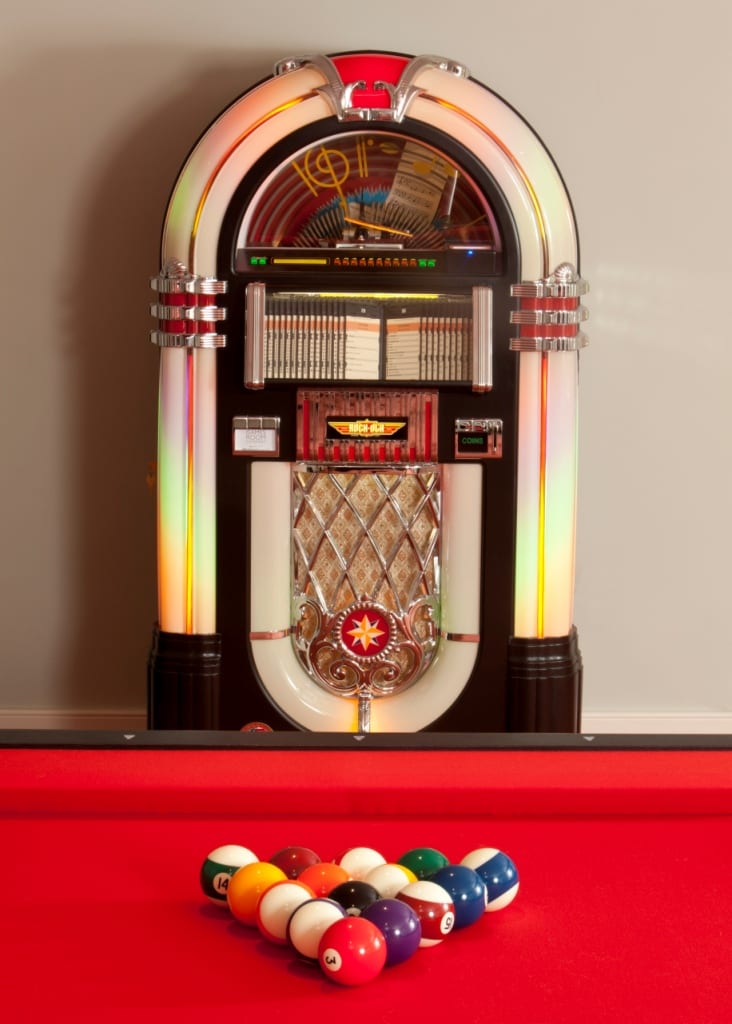
Perhaps the most well-known jukebox design of all time, The Bubbler is actually called the Wurlitzer 1015. It was designed in 1946 by Paul Fuller, just in time to ride the wave of success in the jukebox industry that boomed after World War 2. In just two years, Wurlitzer sold over 56,000 units of the 1015 Bubbler. Why was the jukebox business so good back in the 40s, 50s, and 60s? Well, it was a time for celebration now that the boys were back from war; a time to relax and enjoy life with family and friends and rock & roll.
The Bubbler’s design featured glass tubes that arced along the top of the box. Inside these tubes were bubbles that continuously flowed upwards. It sounds simplistic in theory, but it was an eye-catching effect. The tubes had crystals in the bulbed end that would get heated by a resistor. These heated crystals caused the fluid inside the tubes (dichloromethane) to boil at just 39.6 °C, which saved energy costs. A dye in the fluid made the bubbles stand out more, and the extra coloured lights on the jukebox helped emphasise the effect as well.
Since The Bubbler’s debut, many other jukeboxes have incorporated the shape and style of its design. In fact, it is most likely this very design that initially appeared in your mind when we asked you to think of a jukebox. It’s not that we’re psychic; it’s just that The Bubbler has had that much of an impact on pop culture.
Buy this Jukebox here. We are an Officially Authorised Sound Leisure Retailer.
The Select-O-Matic front panel
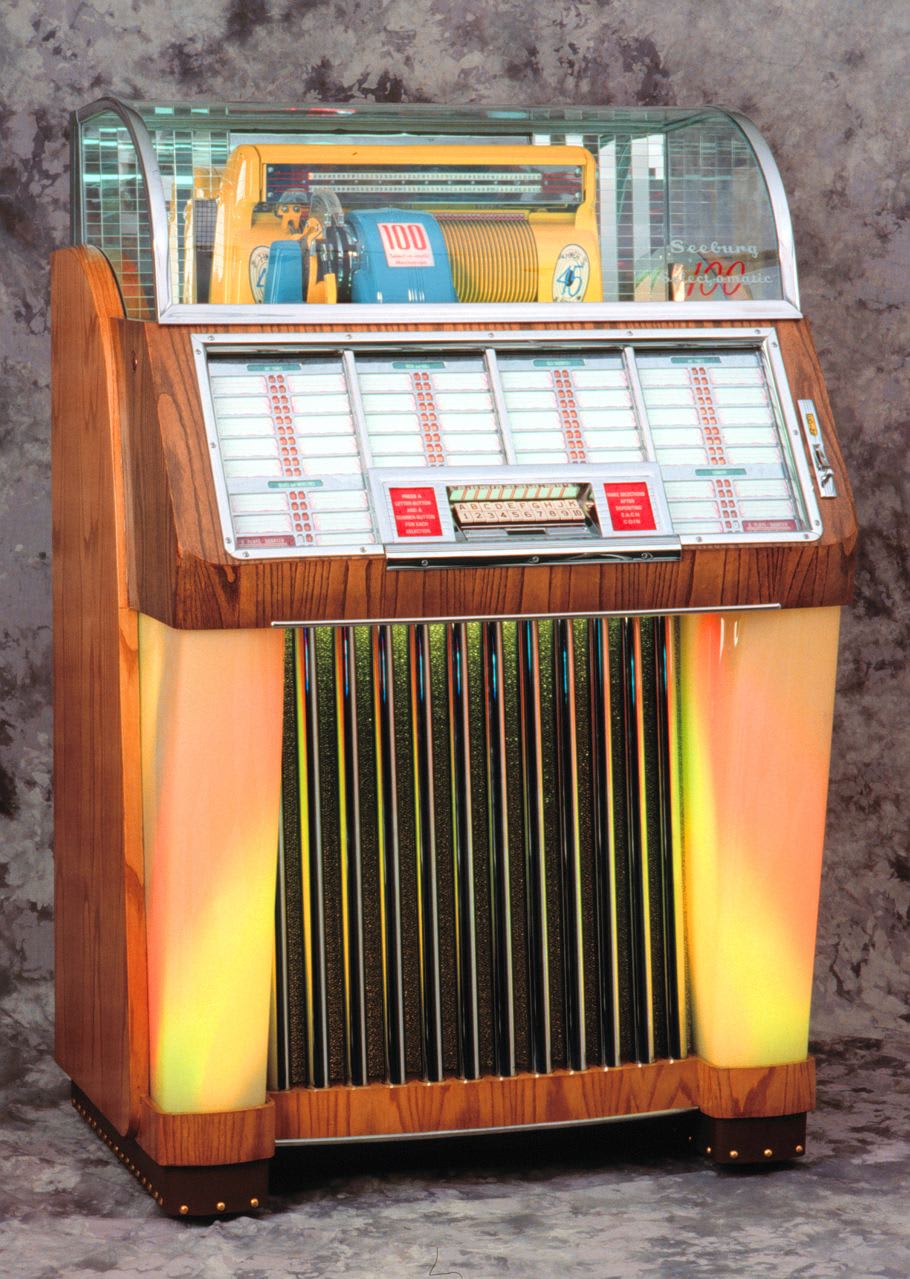
Another well-known design choice in jukeboxes is the front panel of song titles listed in a grid for the song selector. This was first made famous in Seeburg’s Select-O-Matic jukebox (aka the Seeburg M100A). In 1949 when every other jukebox had no more than 20-40 songs available, the Select-O-Matic boasted 100 songs! That front panel of song titles sure was handy.
This exponential increase in song selection was made possible by Seeburg’s rail system that stacked the records horizontally instead of vertically. This new stacking system allowed for more space, which meant more records for the customer to choose from! The rest of the jukebox manufacturers had to scramble to keep up. Just one year later, Seeburg pioneered the jukebox industry again by switching over to the smaller and lighter 45 rpm records—another iconic characteristic that remained popular for almost half a century.
If you’re familiar with the old American show Happy Days, then you have been subliminally conditioned to love this jukebox design. The opening credits for the show feature Seeburg’s M100C model.
The 3W1 Wallbox
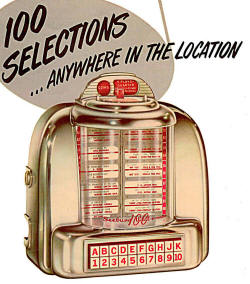
The same year Seeburg came out with their Select-O-Matic, they also produced the Wall-O-Matic, which became prevalent in restaurants, diners, and bars all over. At that time in history, wherever you went, there was a Wall-O-Matic on the counter, at your booth, or on the wall.
This machine was not a mini-jukebox; rather, it served as a remote control for that restaurant’s or bar’s jukebox. Customers could select songs from right where they were sitting. The novelty of the machine was incredibly popular. It was also almost completely made out of chrome, which leads us to our next iconic characteristic of jukeboxes…
Chrome, steel castings, and coloured panels
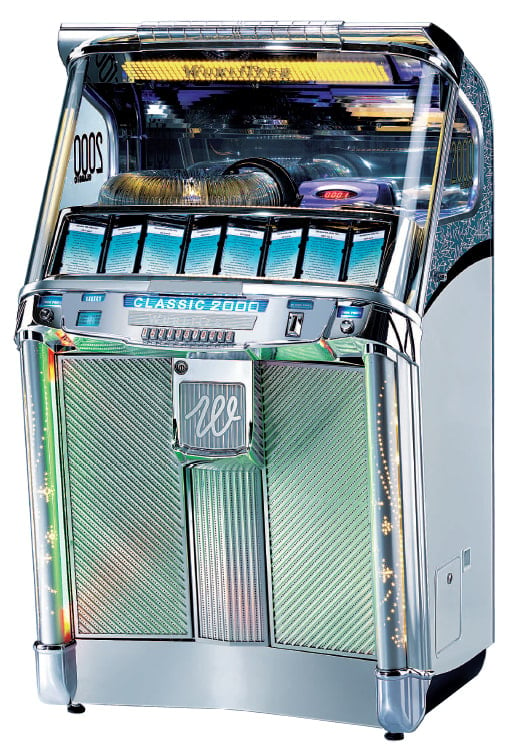
For whatever reason, it’s practically a law that a vintage jukebox has to have excessive amounts of chrome, steel castings, and brightly-coloured glass or plastic panels. It hasn’t always been that way, however. Before the popularity of the designs created in the 40s and 50s, jukebox models had been mostly coming in solid wood. That original, wooden style stemmed all the way back to the 1800s, when the jukebox’s forefathers, the music box and the player piano, were the people’s source of automated music. Jukeboxes were birthed in the 1890s, when recorded sound made its way into those music boxes and caused an evolutionary leap forward.
A leap forward like that and a boom in the industry fifty years later make for a perfect opportunity for a new, flashier art design. Jukeboxes were given a makeover very similar to the eye-catching style of the cars of that time period. Because those particular models of jukeboxes became pop culture icons with age, so did their art styles. The later decades of jukebox designs have paid tribute to that jukebox heyday (and nostalgic appeal) ever since. Strange but true.
See our Jack Daniels Vintage Look Jukebox here. We are the sole licensee for Jack Daniel's branded games room products for the UK and Europe
The Rock-Ola Tempo II
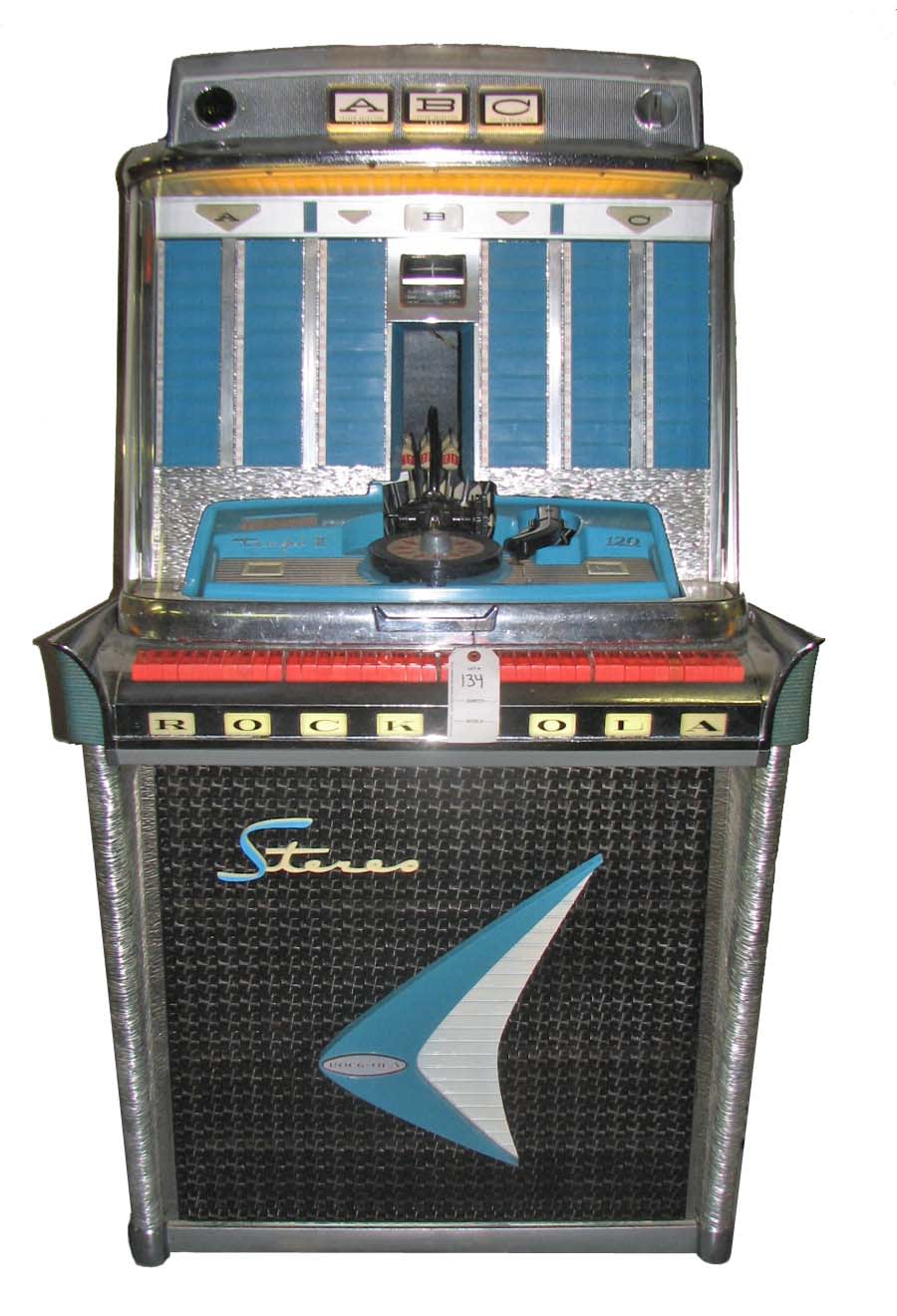
Much like Seeburg’s M100C model, this jukebox became a part of pop culture due to its association with the hit TV show Juke Box Jury. The show initially ran from 1959 to 1967 and then was resurrected for three more seasons in 1979 and 1989-1990. It was a very popular show at the time—the world didn’t have the internet yet, so TV was the best way to hear others’ opinions on whether a new song was a “hit” or “miss.”
The guest judges on the show would listen to songs played on the host’s Rock-Ola Tempo II and pronounce their judgment on the songs’ potential. The show didn’t fair as well in America, but on the BBC with host David Jacobs, it became a part of UK pop culture, and that cemented the Rock-Ola’s place among the most well-known jukeboxes. Plus, it is a beautifully-crafted machine.
Buy The Rock-Ola Tempo 1 here.
Bruno Mars’ Album Cover

We hope that someday TouchTunes’ Virtuo becomes the next iconic representation of the jukebox, but in the meantime, we will have to settle for Bruno Mars’ contribution toward making the idea of a jukebox appealing again.
The machine that is getting inspected by a gorilla on the front artwork of his new album, Unorthodox Jukebox, is vintage in style and yet appealing to today’s generation of teens and young adults. The cover has received nothing but favourable reviews and praise, and it doesn’t hurt that the music on the album is fantastic too.
In particular, Bruno Mars’ Moonshine track is a fan favourite, and look at that—the music video showcases the cover’s jukebox in a blaze of retro glory that blissfully burns our eyes every time we watch it. Thanks for that spotlight on the legacy of the jukebox, Mr. Mars. Jukebox-lovers appreciate it greatly.